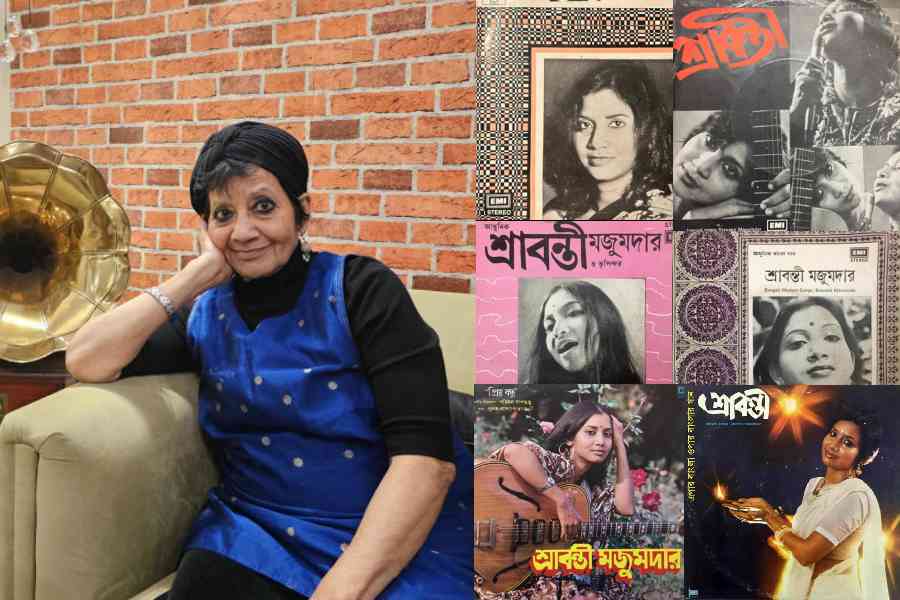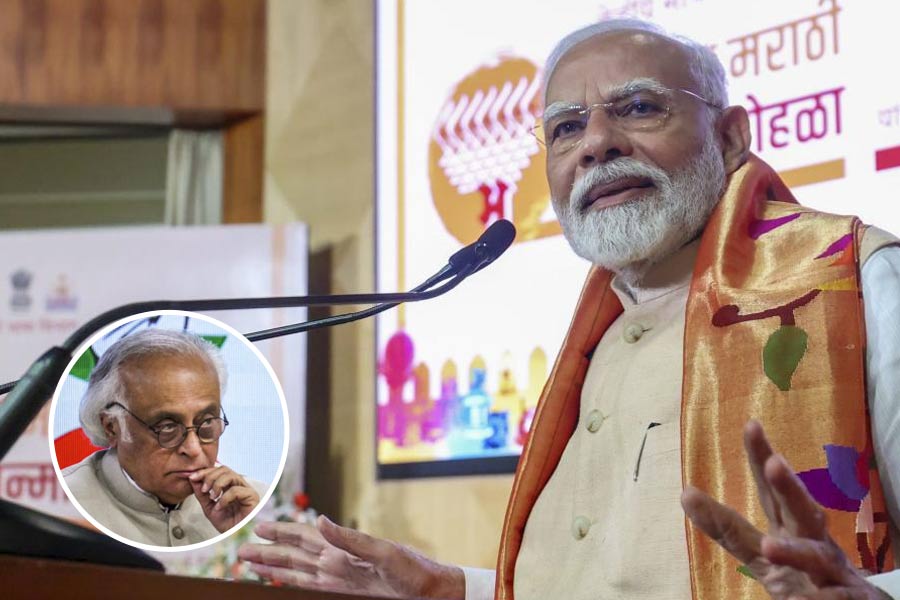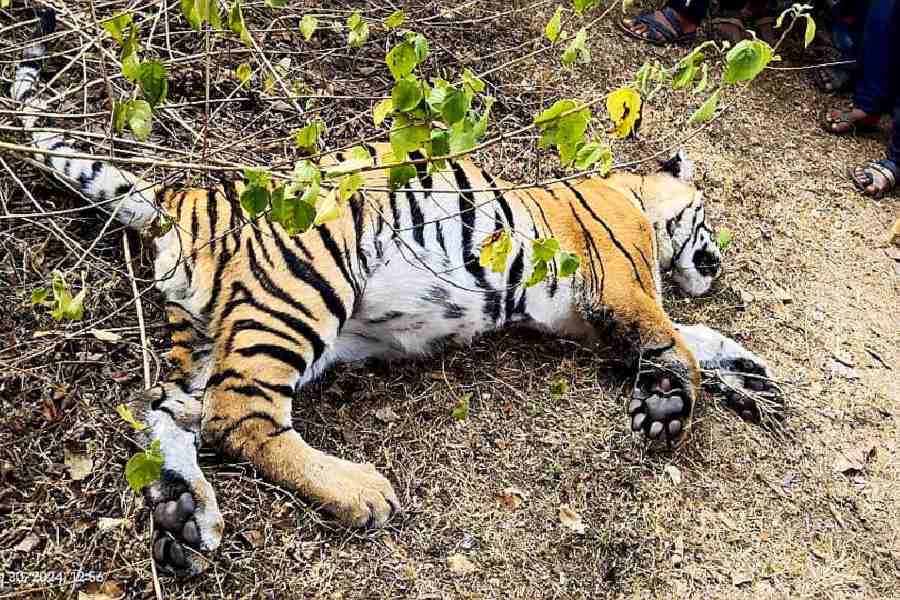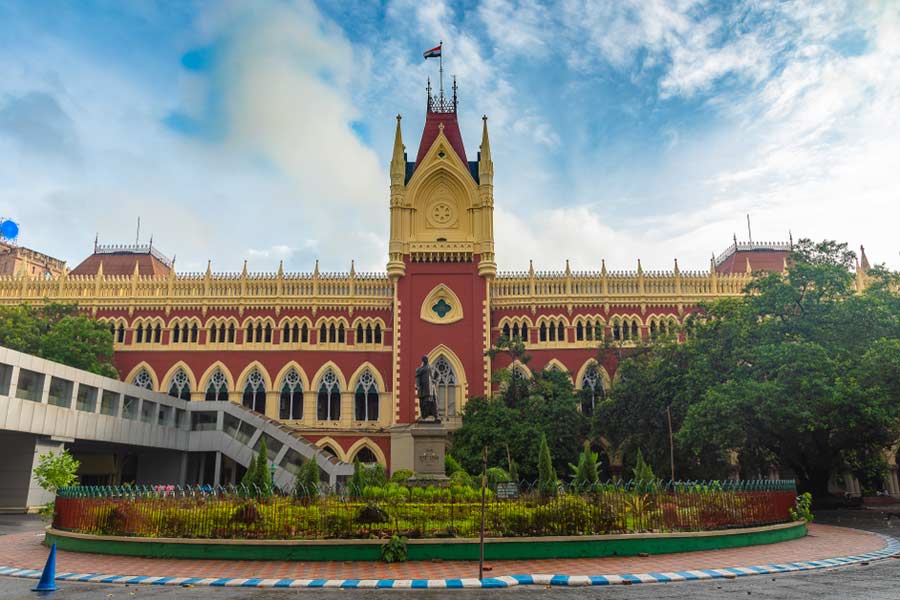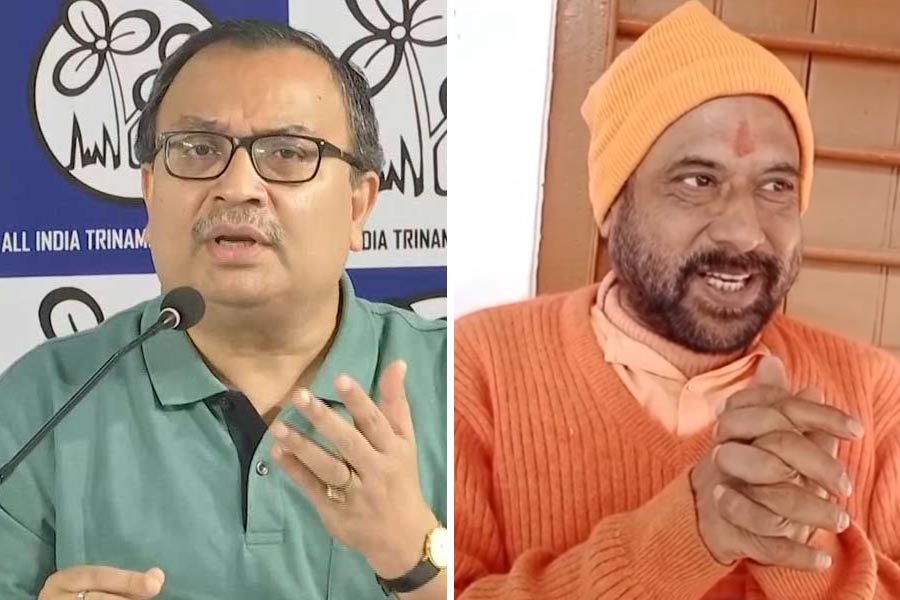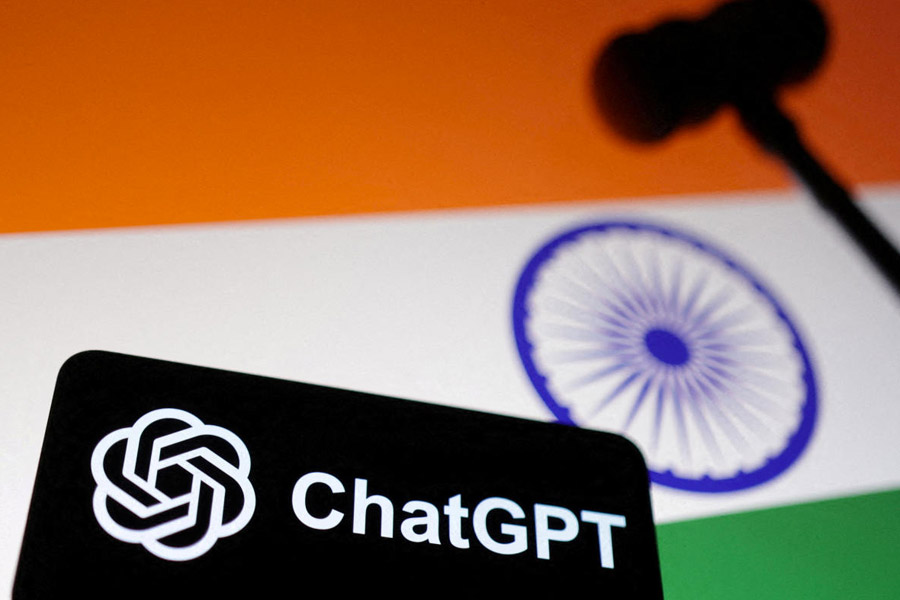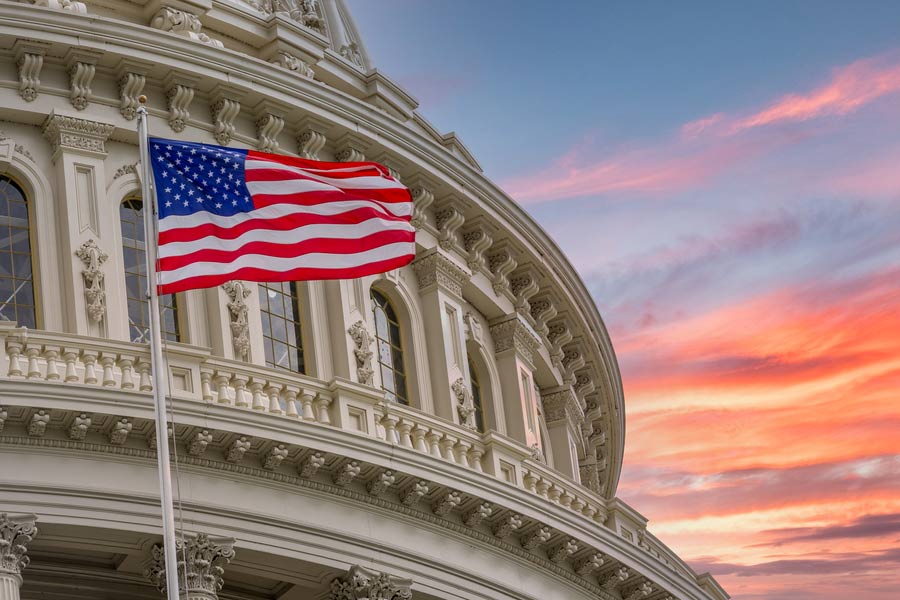Sravanti Mazumder has worn so many hats in her long career in music and broadcasting that no time slot is ever enough for an interview with her. The multi-talented resident of Isle of Man with oodles of charm and a grainy voice, which kept legions of listeners glued to their radio sets through the 70s and 80s, was back in the city recently to launch three songs she has recorded on her YouTube channel. With her short mop tied in a bandana, the kohl-eyed jingle queen and former presenter on Vividh Bharati surfed down ether waves of memory back to her starting years when she — unbelievable as it may sound — was scared to speak on the mic. t2oS was all ears as she reflected on her journey. Excerpts...
You had started singing jingles accidentally, right?
Yes. My first jingle was for Koley Biscuit, sung with Pintu Bhattacharjee. Col. Rabindranath Bose was the one to start making radio commercials for Vividh Bharati in Calcutta. He was the clerk of the course at the Royal Calcutta Turf Club (RCTC). I was trained by him. I recorded my first jingle at his huge apartment on the grandstand, which was frequented by the who’s who of the city. Even Uttam Kumar had requested that he be allowed to shoot Sudhu Ekti Bochhor there.
Col. Bose then left RCTC and set up his studio — Living Sound — at 2/2A Harrington Street (Ho Chi Minh Sarani). Living Sound became my temple.
When did you record your first Bengali album?
Living Sound produced four songs for me composed by V. Balsara and with lyrics by Pulak Bandopadhyay. Col. Bose went to HMV for pressing the songs. A.C. Sen, the A&R (artistes and repertoire) manager at that time, liked the songs so much that he immediately asked me to sing for HMV’s Puja release that year. I am possibly the only artiste at EMI HMV to be asked to sing directly for Puja. There was no audition! But I was so loyal to Col. Bose that I told Mr Sen that I would be too happy to sing for them if they would ask me to sing for Puja the next year. That’s when Mr Sen asked Mr (V.) Balsara and Pulakda to create two songs for Ranu (Mukherjee, daughter of Hemanta Mukherjee) in Sravanti’s style and they created Bushy ball (a song on a pet spaniel). It was super hit.
Did you sing for them the next year?
Yes yes. I was asked. It was 1970. People like Mr Sen and Col. Bose could spot real talent!
When was your first conversation-based radio programme?
Kazi Sabyasachi used to do a show, Binaca Rupkatha, for a Bombay product. He was Kazi Nazrul Islam’s son. We worked together for years. People used to call us the Uttam-Suchitra of radio. I used to sing an Alibaba jingle and he used to play Alibaba, saying that he was opening Binaca’s treasure trove of gems, playing songs, reading letters.... Listeners demanded a Marzina in the Alibaba show. But I was too scared to talk.
That is hard to believe!
Isn’t it? But that’s the truth. Partha (Ghosh)da would have confirmed that had he been around. Parthada and Gouri (Ghosh)di used to work with us till A.I.R. (All India Radio) staff were barred from doing commercial shows. I couldn’t even mouth the spoken words if there were any in the jingles I sang. The reason is I had been bullied from a young age about my deep bass voice and I had developed a complex. But when they forced me to speak as Marzina and then the letters started coming and I saw the response up front at stage shows too. That gave me the confidence that people of Bengal — and Bangladesh — loved me.
You got lots of letters, isn’t it?
Yes, they came by the sackful in a tempo from the Park Street post office. This used to be in the 1970s. The Boroline jingle, which became the national anthem so to say, happened in 1974. I never got any hate mail. I was always didibhai, even to villagers I met during shows. It is people from the cultural field who were wary of me and kept me at arm’s length. I was taken to be a snob. It was their problem, not mine.
Did both you and Usha Uthup face ostracism from the cultural world?
No, it was just me who faced criticism for some reason. Maybe because my PR was non-existent! Usha started her career before me. She sang a lot of jingles in our studio. The others behaved well to my face. I think they could not accept that I could do so much while they only sang.
When did you start doing live shows?
I started performing on stage immediately after the release of my first Puja songs. At that time, we used to have variety shows — we used to call them jalsha — where several popular artistes — singers, dancers, comedians — would perform one after another all night long. These jalshas used to attract huge crowds and were fun. Some were mixed shows with artistes from Calcutta and Bombay. I remember one such show in Midnapore where over one lakh people came. We also had all-night shows with line-ups like Hemanta Mukherjee, Sandhya Mukherjee, Manna Dey, V. Balsara, Mintu Dasgupta, Arati Mukherjee and me. I don’t see that happening any more. Organisers never put me on stage before midnight when people would get drowsy. They knew that my lively performance would wake them up.
Your duet Tumi amar ma with Sandhya Mukhopadhyay reflects the affection she had for you.
My relationship with Sandhyadi started in the ’70s. I met her for the first time at my guru, Ustad Munawar Ali Khan’s residence. He was the son of Ustad Bade Ghulam Ali Khan. She was a disciple of Ustad Bade Ghulam Ali Khan. My guru was Sandhyadi’s gurubhai arrangers, composed and arranged my four Puja songs. I sang two duets with Amit Kumar on that album. Panchamda heard the songs and liked them. After that, he came to our Harrington Street studio a few times with his childhood friend Badal Bhattacharya, who used to live in Lake Gardens. We knew Badalda from before. It was because of Panchamda that I had the chance to sing with Kishore Kumar for a Bengali film called Surer Akashe — Premer khela ke bujhite pare. Swapan Chakraborty was doing the music. It was really sad that the producer took Swapanda to compose the music for his film instead of Panchamda. It was Panchamda who asked Swapanda: “Sravanti ekhon Bombay tey. Tui okey diye gaoachhish na keno?” That’s how I got the song. Kishoreda was returning from Assam after a programme there. Yet he was not at all tired after that long flight. I was really scared but he encouraged me so much as if he knew me for a long time! He sang brilliantly.
You worked with Anu Malik, right?
Yes, that is also for Panchamda. As I said earlier, I wanted Panchamda to sing Boomboody and compose a few more songs for my Puja album but Panchamda was going away for a US tour with Ashaji at that time. He suggested Anu Malik. So I went to Anuji. Anu sang Dhukpuki very well. I had to teach him every word as he didn’t know Bengali. He brought a different dimension to the song and his Bengali accent added a charm. Anu composed two more beautiful songs, Tultule megh jhikimiki roddur, and a sequel to Aye khuku aye, which I sang with Mahendra Kapoor — Jibonsathi khunjte giye pelam je go dujoner dekha/ Ekjon tar darun borolok, ar ekjoner kaj chhobi anka/ Taito Baba elam tomar kachhe...(voice chokes). I tear up every time I remember the words. The girl is asking her father to help her choose between the two. Unfortunately, few people got to hear this song. HMV Saregama did not do any publicity. Both songs were written by Pulakda. By the way, Dhukpuki dhukpuki was written by a friend of mine — Dipesh Chakraborty — historian and a professor in Chicago University.
Another song of yours comes to mind — Meyera keno chheleder moto hoy na.
I wanted a Bengali version of Rex Harrison’s Why Can’t a Woman be Like a Man from the film My Fair Lady. My version was like a sawal-jabab between a man and a woman. It was written by Rongon Chakraborty. I got Soumitra (Chatterjee) da to record that with me. This would be circa 2009. I also did a radio program Abar Srabanti for Friends FM from 2010 to 2014.
Despite your musical hits, it’s radio that comes to mind once your name is mentioned.
That’s up to people to judge. I enjoy radio as much as I enjoy creating music. I am an ideas person. Radio had given me so much.
You were a successful producer too.
Once I planned to do a Kiriti Roy play and I knew I had to take a voice (to play Nihar Ranjan Gupta’s sleuth) who would be unfamiliar on the radio. On hearing who I wanted, Buroda (Tarun Kumar, Uttam Kumar’s younger brother) who used to act with us regularly, told me: “Tui chole ja dadar kachhe.” So Col. Sen and I went to him. He got very excited thinking we were planning a film. But the moment he heard it was for the radio he backed out. Dubbing for films is a different art where he would give voice to his own on-screen actions. He knew radio required a different training. That’s why I am against the term srutinatok. When Bikash (Roy) da and I did Sesher Kobita on stage, he would call our performance abritti o path.
Coming to your new releases, the song Dadu nati ar ekta machher gaan has a novel subject.
We were thinking of doing an album based on the sea. I suggested to Soumya (Dasgupta, son of renowned composer Sudhin Dasgupta), who has arranged all three songs as also written and composed Dadu nati ar ekta macher gaan, to adapt the story of Ernest Hemingway’s The Old Man and the Sea, where the old fisherman caught nothing for 84 days in the sea. Then on the 85th day when he got the biggest catch, he had to fight a shark which ate most of his catch.
The second song — Tarpor chhuti pabo — is in the British tradition of sea shanties that the mariners sing. The Bengali lyrics were written by Souvik Misra. He gave it a local flavour by basing the song on the fishermen in the Sunderbans. The third song is a cover of Louis Armstrong’s What a Wonderful World. Souvik wrote that too — Ki shundor ei prithibi. In these turbulent times, I wanted to sing a song of hope and positivity.
All three songs are different.
I always choose a picture to paint in my songs. My first two Puja songs, Ami akta chhotto bagan korechi and Chokh duto ojante uthlo knepe, were liked by people. Both were innocent romantic songs. Romance of our time was quite different from today’s!
Your last album was launched in November 2013. So you are launching new songs after 11 years?
Actually it was 2014 by the time the album hit the market. So my new songs are released after 10 years. This time I am the producer. They will be on all social platforms. Nowadays, it makes no difference whether you go to a recording company to market your songs or you do it yourself. Once my whole album is ready, I wish to release an LP (long-playing record). In the West, they release a single. Once it is heard by the listeners for some time, they release the whole album. But for Bengali singers, there is only one way to release their songs now — on social platforms!

